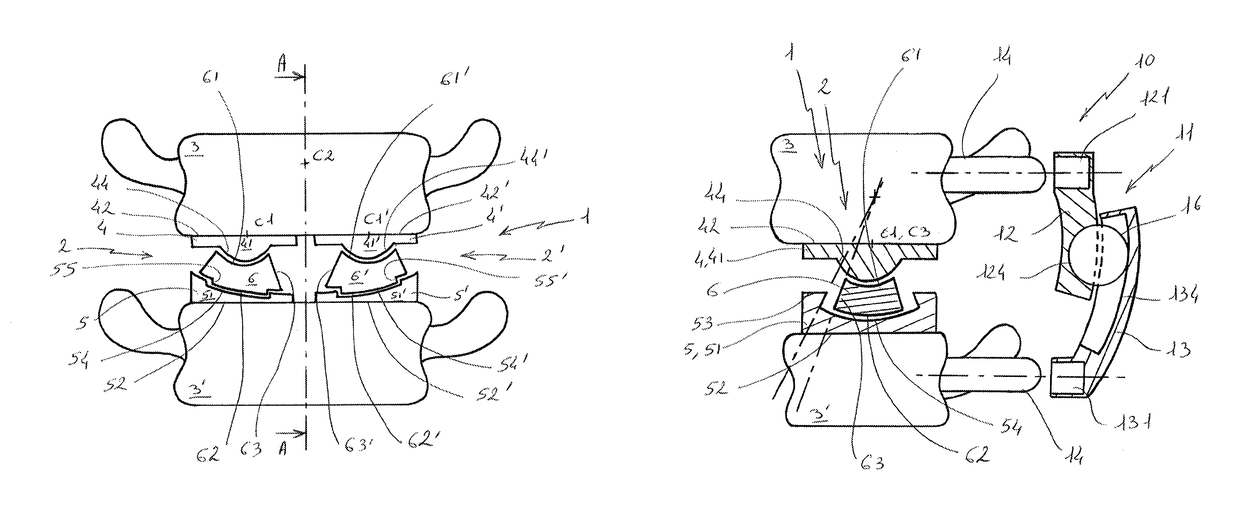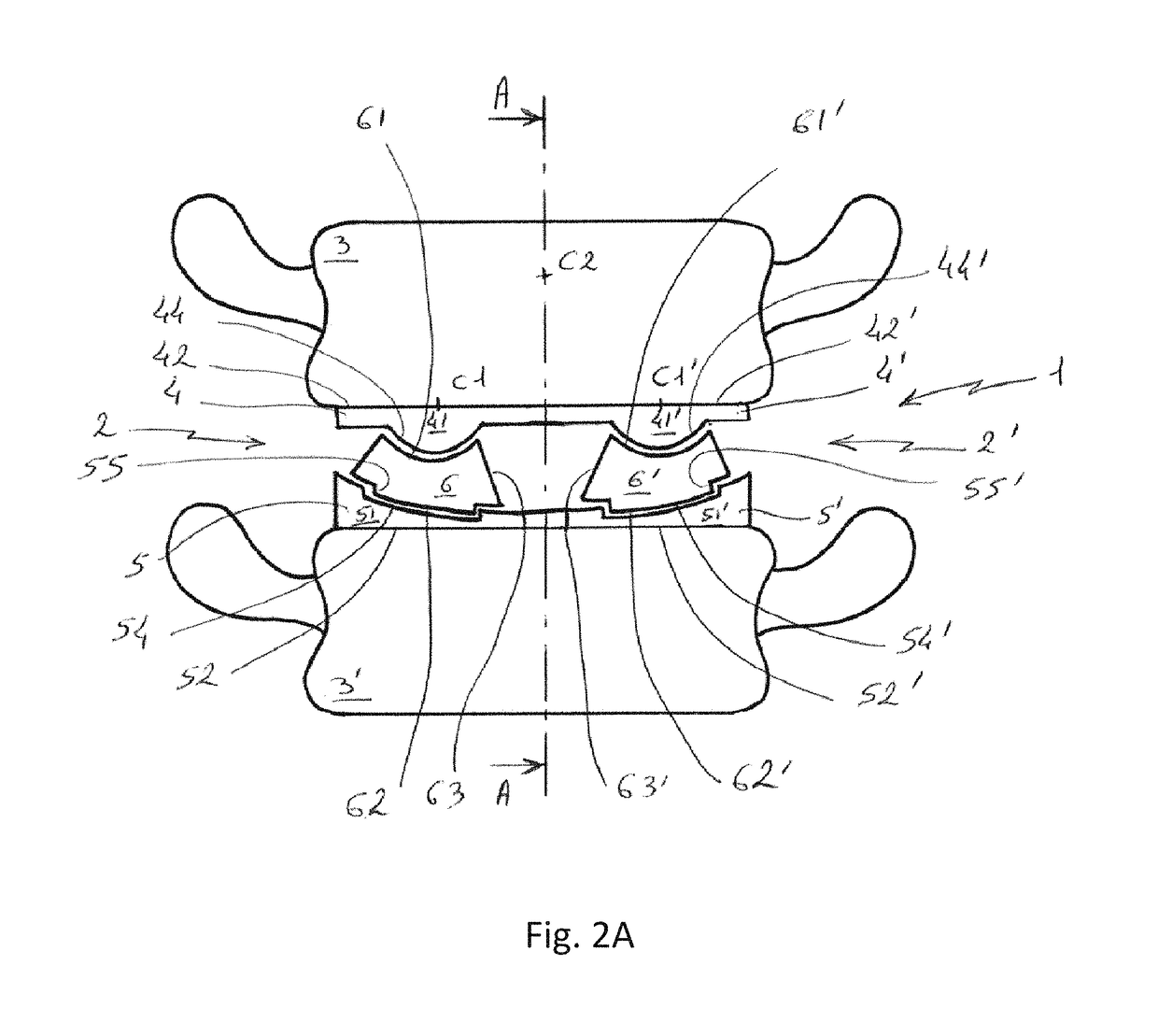Intervertebral disc prosthesis and intervertebral prosthetic unit
a technology of intervertebral discs and prostheses, which is applied in the field of self-adjusting and self-stabilizing intervertebral disc prosthesis and intervertebral prosthetic units, can solve the problems of high patient risk, difficult prosthesis technology, and unsatisfactory kinematics of the vertebral column
- Summary
- Abstract
- Description
- Claims
- Application Information
AI Technical Summary
Benefits of technology
Problems solved by technology
Method used
Image
Examples
Embodiment Construction
[0029]In reference to FIGS. 1 and 2, the prosthesis 1 according to the invention is intended to be arranged in the place of a fibrocartilage disc ensuring the connection between the vertebrae 3, 3′ of the vertebral column, for example the lumbar vertebrae. The prosthesis 1 comprises two subassemblies 2, 2′ arranged symmetrically with respect to the median plane of the prosthesis 1 and therefore of the vertebral column. A single subassembly 2 is visible in FIG. 1.
[0030]Each subassembly 2, 2′ comprises at least three parts, including a first plate called the upper plate 4, 4′, a second plate called the lower plate 5, 5′ and a mobile core 6, 6′ arranged between the two upper and lower plates 4, 5; 4′, 5′. The upper plate 4, 4′ and the lower plate 5, 5′ are thus articulated one with respect to the other by way of the mobile core 6, 6′.
[0031]Each upper plate 4, 4′ comprises a central body 41, 41′ of which the shape and dimensions are complementary to those of the upper vertebra 3 of the ...
PUM
| Property | Measurement | Unit |
|---|---|---|
| thickness | aaaaa | aaaaa |
| radius of curvature | aaaaa | aaaaa |
| distance | aaaaa | aaaaa |
Abstract
Description
Claims
Application Information
 Login to View More
Login to View More - R&D
- Intellectual Property
- Life Sciences
- Materials
- Tech Scout
- Unparalleled Data Quality
- Higher Quality Content
- 60% Fewer Hallucinations
Browse by: Latest US Patents, China's latest patents, Technical Efficacy Thesaurus, Application Domain, Technology Topic, Popular Technical Reports.
© 2025 PatSnap. All rights reserved.Legal|Privacy policy|Modern Slavery Act Transparency Statement|Sitemap|About US| Contact US: help@patsnap.com



